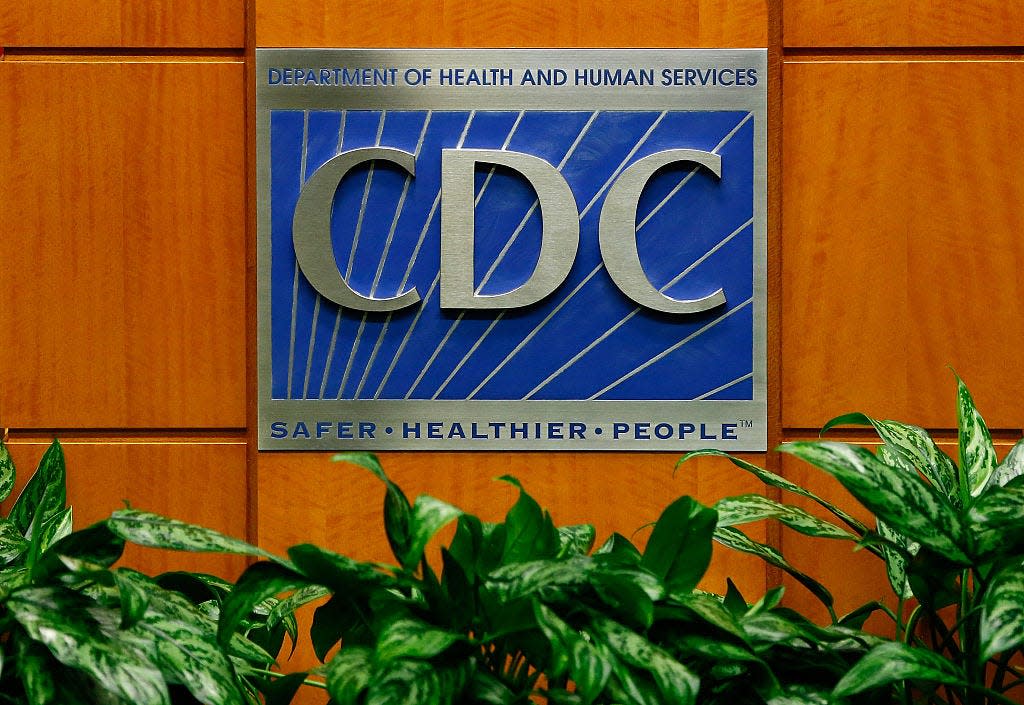California, Oregon broke with CDC over COVID isolation guidelines. What does Florida say?
Concern over COVID-19 continues to relax across the country, despite rising cases, hospitalizations and a surge in wastewater viral activity levels.
On Jan. 9, California broke away from the CDC's COVID-19 isolation guidelines with new rules allowing people who have tested positive for the virus to skip the isolation period if they are not showing symptoms or come back to school or work with "mild and improving" symptoms after 24 hours of being fever-free. This follows Oregon, which made the same call in May of last year.
“We are now at a different point in time with reduced impacts from COVID-19 compared to prior years due to broad immunity from vaccination and/or natural infection, and readily available treatments available for infected people,” California Department of Public Health Director Dr. Tomás Aragón said in the state order.
Both states still advise anyone infected to avoid contact with high-risk people and mask around others for 10 days after testing positive or becoming sick. But efforts are now being focused on protecting the people most at risk while "reducing social disruption that is disproportionate to recommendations for prevention of other endemic respiratory viral infections,” Aragón said.
What are the official COVID isolation recommendations in Florida, where Gov. Ron DeSantis boasts about his record of opposing COVID restrictions and the state Surgeon General has consistently challenged the safety of vaccines and boosters?
At the moment, Florida is more restrictive than California or Oregon when it comes to isolation.
What are the CDC recommendations for COVID isolation?

Over the course of the pandemic the CDC also has relaxed its recommendations, but it still advises isolating. In the latest version of the guidelines:
If you suspect you may have COVID, you should isolate and get tested.
If you test negative, you can end your isolation.
If you test positive, remain home and isolate for five days, the period when you are the most likely to be contagious.
After those five days, if you didn't have symptoms you can end your isolation.
If you did have symptoms but are fever-free for 24 hours without the assistance of medication and your symptoms are improving, you may end isolation.
If you test positive without symptoms but develop symptoms during the 10 days following, the isolation clock restarts.
If you experience shortness of breath or difficulty breathing you should isolate for 10 days.
People who had a severe illness that resulted in hospitalization or who are immunocompromised should consult their doctor about treatment plans and isolate for at least 10 days as well.
During isolation periods, the CDC suggests you:
Avoid being around people who are more likely to get very sick from COVID-19.
Wear a high-quality mask if you must be around others at home and in public.
Do not go places where you are unable to wear a mask.
Stay home and separate from others as much as possible: use a separate bathroom, if possible, and don;t share personal household items
Take steps to improve ventilation at home, if possible.
Monitor your symptoms. If you have an emergency warning sign (like trouble breathing), seek emergency medical care immediately.
The CDC also recommends continuing to wear a mask through day 10.
What are the CDC's mask guidelines for COVID-19?
In February 2022 the CDC relaxed its mask guidelines and tied them instead to risk factors by county, based on hospitalization levels. You can track those with the COVID-19 County Check here.
At medium COVID-19 hospital admission levels, masks are recommended for high-risk people or anyone with household or social contact with someone high-risk. Masks are recommended for everyone in counties with high COVID hospital admission levels.
According to CDC data as of the week ending Jan. 13, 2024, there are currently no high levels of COVID hospital admissions in any county in Florida but there are several medium ones, notably Hernando, Pasco, Pinellas and Hillsborough counties (all up nearly 12% over the previous week) and Osceola County (up over 28%).
What are Florida's recommendations for COVID isolation and masks?
The latest guidance from the Florida Department of Health, dated Feb. 24, 2022, is similar to the CDC's as far as isolation periods go, but it specifically defies the CDC's guidance on wearing masks.
"Unlike CDC guidance, this guidance does not rely on wearing facial coverings in a community setting," the FDOH guidance says. "There is not strong evidence that facial coverings reduce the transmission of respiratory viruses."
Repeated studies have shown that high-quality N95 and KN95 masks, when used properly, drastically reduce the amount of respiratory droplets you spread, and they reduce the amount you breathe in (but not as much). That slows down the spread of COVID by reducing the droplets expelled by an infected person. Widespread use of masks and social distancing also likely brought the country down to possibly the lowest level of flu cases ever recorded.
But mask mandates became a political hot button issue resulting in shouting at school board meetings, DeSantis' battle against mask and vaccine mandates in schools and businesses, and the rise of conservative activist group Moms for Liberty.
"In Florida, there will be no lockdowns, there will be no school closures, there will be no restrictions and no mandates in the state of Florida,” DeSantis said in July 2021 when he issued an executive order blocking mask mandates in schools in response to the CDC's recommendation.
The next month Florida saw its highest rate of COVID-related deaths (10,248) all that year.
There have been 93,298 reported COVID deaths in the state since the pandemic began, according to FDOH data. Florida has consistently had the third-highest number of COVID cases and deaths in the country behind California and Texas.
This article originally appeared on The Daytona Beach News-Journal: COVID-19 isolation guidelines: 2 states break from CDC, Florida stays
